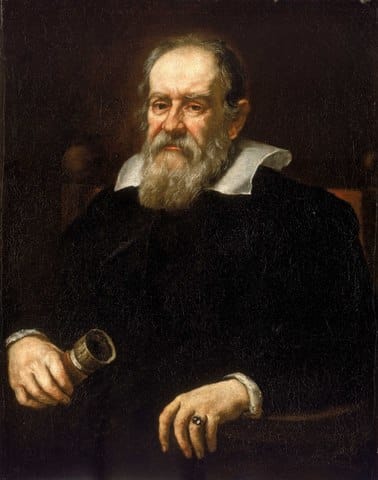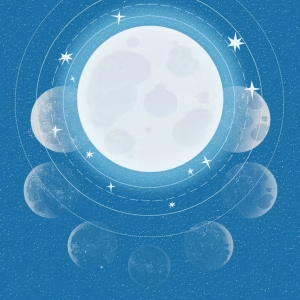In 1610, Galileo Galilei pointed a simple pair of binoculars (no, not a cheap telescope) with - only 20x magnification at the sky. He discovered four moons orbiting Jupiter, and saw something strange at Saturn. Not sharp rings as we know them today, but bulges, ‘appendages’ that he could not explain. Yet with that primitive instrument he laid the foundation for everything we now know about our solar system.
What Galileo could do at 20x magnification, you can do today. Provided you make the right choice.
What if you have less than €100 to spend?
Be realistic: under €100 you won't buy a good telescope. What you do buy is frustration - wobbly tripods, blurry images, useless accessories and empty promises like “600x magnification.”.
Is your budget less than $100? Then consider a binoculars.
A good pair of 8×42 or 10×50 binoculars will let you see a surprising amount:
- The moon with its shadows and craters
- The four largest moons of Jupiter
- Star clusters such as the Pleiades
- Satellites, the ISS, the Milky Way
You'll also learn a lot: how to navigate, where to look, and how light pollution affects your vision. These are skills every stargazer needs - telescope or not.
From €100 it starts to get interesting
Do you have more than €100 to spend? Then you can start with real telescopes that deliver results. No marketing tricks, but decent optics on a stable mount.
The first step: know what you want to see. The moon? Jupiter? Or do you dream of galaxies? What you choose depends on your goal AND budget.
What can you do expect from a cheap telescope?
If you choose the right one, you can observe the following:
- The moon in detail, including terminator line, craters and mountain ranges
- Jupiter as disk with cloud bands and four moons
- Saturn including rings
- Mars as a red disk, sometimes with polar cap
- Orion Nebula and Andromeda galaxy (under a dark sky)
Which is not realistic in this price range:
- Colors in nebulae or galaxies
- Extreme detail on planets
- Deep-sky at the level of astrophotos
What should you avoid?
Most mis-selling has the same characteristics:
- “600x magnification” on the box
- Telescope on a tripod made of thin metal or plastic
- Many accessories that add nothing
- Poor eyepieces or low-quality Barlow lenses
In short, anything that promises too much for too little money should be abandoned.
The best cheap telescopes by budget
Below are the models that are really worthwhile. Selected for optical quality, stability and ease of use.
Budget: €100 - €300
A tabletop Dobson within your budget
- Click here to see a list of tabletop dobsons that fit within your budget. The larger the second number, the better for planets.
- Simple, robust and optically strong
- Suitable for moon, planets and first deep-sky objects
Celestron FirstScope (only for very low budget)
- Simple design for children or beginners
- Limited range, but good for lunar observations
Bresser Messier 130/650 Dobson
- Larger opening, more light
- Ideal for both planetary and deep-sky observation
- Stands firmly and is easy to use
Budget: €300 - €600
- Excellent range and light output
- Shows you more structure in nebulae and star clusters
- Best balance between price and performance
Celestron StarSense Explorer Dobson 130/650
- Convenient smartphone help in finding objects
- Interesting for those who have no experience but want convenience
Can a cheap telescope show deep-sky objects?
Yes, but with limitations. With a telescope of 130 mm or larger you see:
- Orion nebula as a nebulous spot
- Andromeda as a vague system
- Double stars such as Albireo
The more aperture you have (in mm), the more light you catch. And the darker your surroundings, the better the results. So deep-sky objects require not only a good telescope, but also the right conditions.
Which cheap telescope suits you?
For planetary observation:
- Go for a compact Dobson such as the Omegon N 102/640 or the Bresser 130/650
- Use a good 10 mm or 6 mm eyepiece (replace the standard supplied one if necessary)
For deep-sky exploration:
- Starts at 130 mm opening or more
- Dobsonians are by far the best choice in price-quality here
For convenience and help with navigation:
- Choose a model with StarSense or app support if you have little experience
Summary: what really works under €300?
- Don't buy a telescope under €100. If so, invest rather in a good pair of binoculars.
- Opt for a Dobson. No frills, but great value for money.
- Note the aperture and focal length: The first and second number. The first number for deep sky, the second number for planets
- Forget magnification. Good optics and stability determine your image quality.
Want certainty in your choice? Then use our telescope selection guide or view the selection directly in our categorie cheap telescopes.








